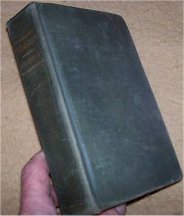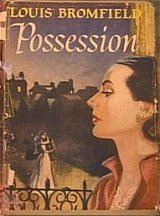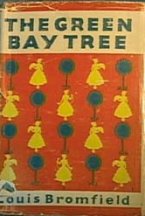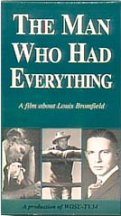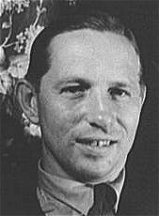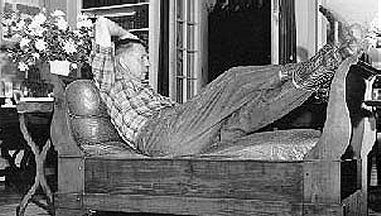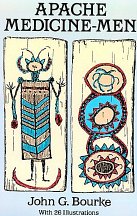 Apache
Medicine-Men Washington. Extracted from 9th Annual Report of
the Bureau of Ethnology for 1887-88. GPO. 1892 ~445-603 pages. Illustrations
and six full colored lithographs of various magical artifacts of the Apache. Apache
Medicine-Men Washington. Extracted from 9th Annual Report of
the Bureau of Ethnology for 1887-88. GPO. 1892 ~445-603 pages. Illustrations
and six full colored lithographs of various magical artifacts of the Apache.
Classic of 19th-century anthropology covers role of medicine-men in
treating disease, superstitions, paraphernalia, medicine-women, the use
of tule pollen as sacrificial powder, clay-eating, sacred breads and cakes,
the izze-kloth or medicine cord, medicine hat, spirit or ghost dance headdress,
amulets and talismans, more.
Also analogous objects, rites, ceremonies in other cultures.
eText
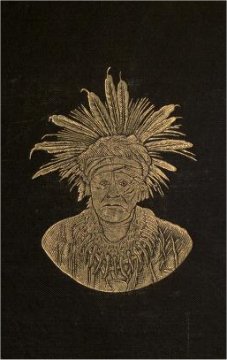 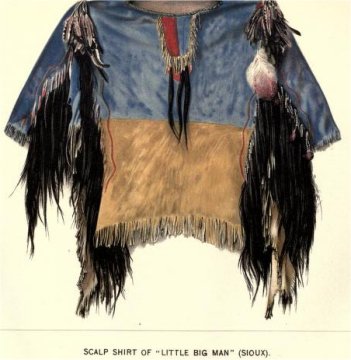
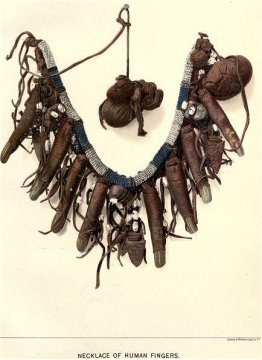 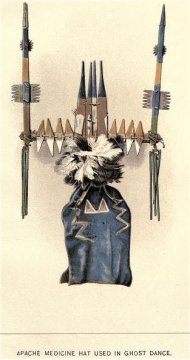 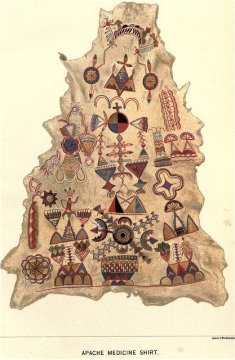
OTHER:
On
the Border With Crook ~ 1891 ~ New York, C. Scribner's sons
~ reprinted by Univ of Nebraska Pr (June 1971)
From 1870 until 1886 Captain John O. Bourke served on the staff of
General George Crook, who Sherman described as the greatest Indian fighter
the army ever had, a man whose prowess was demon-strated "from British
America to Mexico, from the Missouri River to the Pacific Ocean." But On
the Border with Crook is far more than a first-hand account of Crook's
campaigns during the Plains Indian wars and in the Southwest. Alert, curious,
and perceptive, Bourke brings to life the whole frontier scene. In crisp
descriptions and telling anecdotes he recreates the events and landscapes
through which he moved; he sketches sharp action-pictures not only of Crook
and his fellow cavalrymen but also of such great leaders as Sitting Bull,
Crazy Horse, and Geronimo. Perhaps most important, Bourke shows us how
General Crook was able to achieve his most remarkable victory—how this
man of war won and deserved the trust of the tribes he had subjugated.
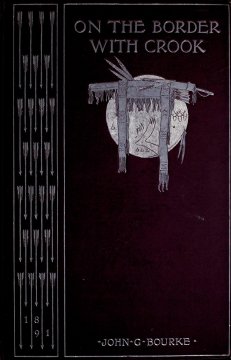 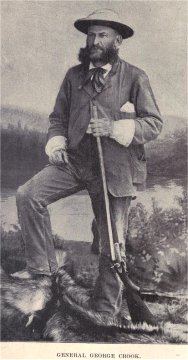 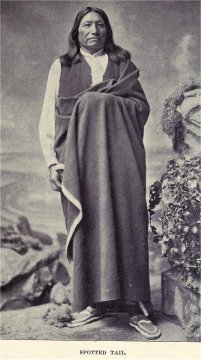 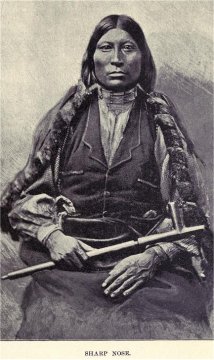
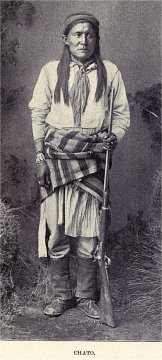 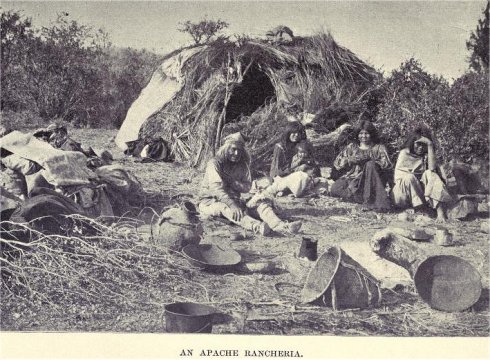
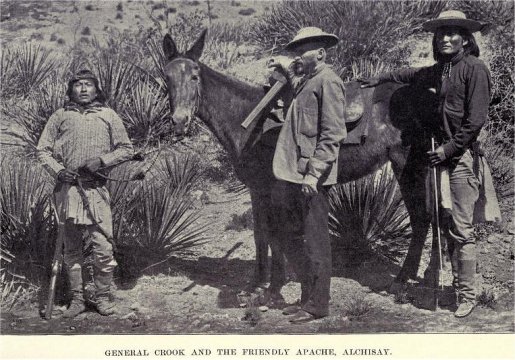
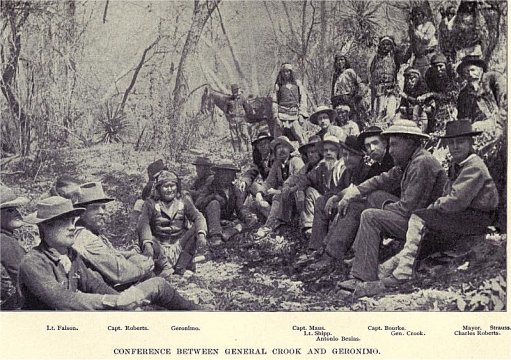 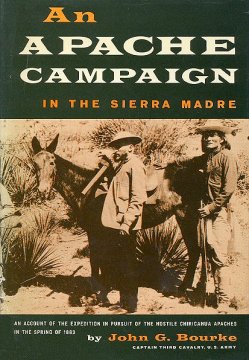
An
Apache Campaign | Archive
Edition (1886) New York, C. Scribner's sons
This short but fascinating chronicle written by an eye-witness and
participant, tells the story of the United States Army's 1883 campaign
against the Apache Indians in the Sierra Madre. Out-of-print and virtually
unprocurable for many years, it unites in its pages three famous
figures in Western history Geronimo, the Apache; General George Crook,
the greatest of our Indian-fighting soldiers; and John Gregory Bourke,
one of the most sympathetic and best-informed writers on American Indian
ethnology.
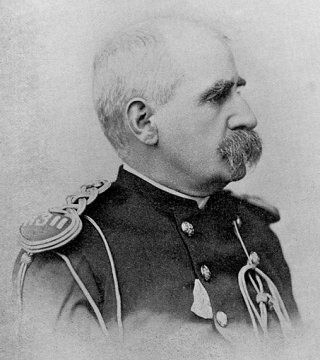 John Bourke
writes of General George Crook, a legendary Indian fighter in post-Civil
War Arizona, Wyoming, and Montanna. Bourke, who for most of the time was
Crook's aide-de-camp, is an unabashed admirer of the General, but the book
goes far beyond flattery and sycophancy. Bourke makes the reader admire
Crook as much as he himself does, for Crook truly did possess unmatched
stamina, experience, attention to detail and equal measures of sympathy
for the Indians he was fighting and ruthlessness in his ambition to drive
them onto the reservations. Bourke too admires the Indians, especially
the Apaches. In fact, one of the book's high points is its almost anthropological
descriptions of Apache life, the Arizona landscape, life in the frontier
Army, and the social milieu of old Tuscon. The descriptions of Crook's
campaigns against the Sioux and Cheyenne flag just a little, but only in
comparison to Bourke's own rapturous discussions of life in the Southwest.
The book that this compares best to is Eugene Ware's "The Indian War of
1864" (which I've also reviewed for Amazon). Ware, like Bourke, was a serving
Army officer with a keen, sympathetic eye for all he saw in the old West.
Both were involved in more hair-raising episodes than a dozen Hollywood
action heroes combined. I too am a serving Army officer, and I can testify
that none of my peers today has seen as much or writes so well. John Bourke
writes of General George Crook, a legendary Indian fighter in post-Civil
War Arizona, Wyoming, and Montanna. Bourke, who for most of the time was
Crook's aide-de-camp, is an unabashed admirer of the General, but the book
goes far beyond flattery and sycophancy. Bourke makes the reader admire
Crook as much as he himself does, for Crook truly did possess unmatched
stamina, experience, attention to detail and equal measures of sympathy
for the Indians he was fighting and ruthlessness in his ambition to drive
them onto the reservations. Bourke too admires the Indians, especially
the Apaches. In fact, one of the book's high points is its almost anthropological
descriptions of Apache life, the Arizona landscape, life in the frontier
Army, and the social milieu of old Tuscon. The descriptions of Crook's
campaigns against the Sioux and Cheyenne flag just a little, but only in
comparison to Bourke's own rapturous discussions of life in the Southwest.
The book that this compares best to is Eugene Ware's "The Indian War of
1864" (which I've also reviewed for Amazon). Ware, like Bourke, was a serving
Army officer with a keen, sympathetic eye for all he saw in the old West.
Both were involved in more hair-raising episodes than a dozen Hollywood
action heroes combined. I too am a serving Army officer, and I can testify
that none of my peers today has seen as much or writes so well.
The concept of Manifest Destiny took root during the Mexican American
War, and assumed grander proportions following the Civil War. Gen. Crook
had been a calvery officer whose services proved to be of considerable
value, as much for his ability as for his compassion for the Indians. His
job was to protect the settlers and subdue the Indians by locating them
on reservations. The author was with Crook during his first and second
Southwest campaigns as well as that of the Northern Plains. His love for
his commander and appreciation of the Indians made him the perfect writer
for the topic. Gen. Crook seems the ideal officer for the job, but was
defeated, not by the Indians but Agents assigned, after the army had done
its work, to reservations by Washington. The book is a wonderful description
of the duty performed by Gen. Crook who, had his system been utilized,
would have led to a better life for all. In the end, Bourke feels, Crook
died of a broken heart. Important history, and a story too beautifully
told to miss.
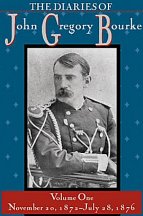 The Snake
Dance of the Moquis of Arizona: Being a Narrative of a Journey from Santa
Fe, New Mexico, to the Villages of the Moqui Indians of Arizona ~
reprinted by Kessinger Publishing (August 2003) The Snake
Dance of the Moquis of Arizona: Being a Narrative of a Journey from Santa
Fe, New Mexico, to the Villages of the Moqui Indians of Arizona ~
reprinted by Kessinger Publishing (August 2003)
1884. The author has endeavored to present a truthful description of
religious rites of the Moqui, the very existence of which is known to but
a few of our people, and a narrative of incidents which may serve to entertain
and amuse, if they do not instruct, those into whose hands this book may
fall. The Moqui Indians inhabit seven different villages, situated a few
leagues apart. In treating them all, it was impossible to avoid a seeming
repetition of description, where the same apparel, food, arms and ceremonies
were to be explained. This work is a narrative of a journey from Santa
Fe, New Mexico, to the villages of the Moqui Indians of Arizona. Illustrated.
The Diaries of John Gregory Bourke: November 20, 1872, to July
28, 1876 ~ reprinted by University of North Texas Press (March
2003)
Wikipedia
Entry
Courtesy of the United States Army:
Arlington
Cemetery
John Gregory Bourke was first of all a soldier. At the age of sixteen
(1862) he ran away from his comfortable, book-filled, Philadelphia home
to enlist in the 15th Pennsylvania Cavalry. As a Private, he saw three
years of Civil War action, receiving the Medal of Honor for his gallantry
in action at Stone River, Tennessee.
Soon after mustering out in 1865, he received an appointment to West
Point. He graduated in 1869, eleventh in a class of thirty-nine and received
his Second Lieutenant's commission in his lifelong regiment, the 3d United
States Cavalry. But for many years he served as aide de camp to the most
thoughtful of Indian fighters — Brigadier General George Crook. Bourke
began his relationship with his “great chief” in 1871, shortly after Crook
arrived in Arizona. It was an assignment to his liking as it kept him in
the field for almost thirteen years and at the center of the action against
the Apaches of the Southwest and the tribes of the great plains.
In these campaigns he acted as both adjutant and engineering officer.
It was not for his soldiering, but his scholarship, powers of observation,
imagination, writing ability and an easy Irish humor that kept him alive
in the consciousness of succeeding generations. During his career he was
given time off from his field duties to live among and study the Indians
of Arizona. A language scholar from the age of eight (Latin, Greek, and
Gaelic), he added the Apache tongue to his inquiries.
In the last ten years of his life (1886-96), he wrote prolifically and
added prominently to the inventory of our knowledge of native Americans.
He was an anthropologist of the first order. Bourke has a certain spiritual
kinship with present day military historians and museologists because he
was a contemporary historian, recording his military experiences with insight
and care, and because his interest in museums extended to a honeymoon tour
of European museums in the early 1880s. He also is an inheritor of the
tradition of the soldier-scholars who passed before him on the immense
stage of the American West, men like Emory, Sitgreaves, Whipple and Parke
who recorded their impressions and cataloged scientific data. An Apache
Campaign (1886) and On the Border With Crook (1891) are fascinating
accounts of military life on then an exotic and hard frontier. They are
made all the more prominent by Bourke’s sensibilities, his ear for dialogue
and an imaginative literary style. The American Southwest and the American
Army of the 1880s was a place of character and characters and John Bourke
understood both. His sketches are always human and unfailingly capture
the humor of the author and his contemporaries.
In 1888 two important players in the Geronimo campaign were both competing
for the same job in the Inspector General's department. The position meant
a promotion to Major. In September President Cleveland chose Henry W. Lawton
to fill the assistant Inspector General post. Passed over was John Bourke
who expressed some bitterness about not getting the job and promotion.
Because he felt that many deserving officers had been overlooked, in 1894
Bourke turned down a retroactive brevet promotion to Major for his service
in the Southwest.
Just two weeks before his fiftieth birthday, on 8 June 1896, Bourke
died from an aneurysm of the aorta.
He served with the 15th Regiment of Pennsylvania Volunteer Cavalry
during the Civil War, 1862-65. He then served with the 3rd United
States Cavalry in the Southwest, 1869-96, and made intensive studies of
Indian life while on military duty. He was awarded the Medal of Honor in
connection with services during the Civil War. He wrote: "On The Border
With Crook,"; "General Crook In Indian Country,"; "An Apache Campaign in
the Sierre Madre." He died on June 8, 1896 and was buried in Section 1
of Arlington National Cemetery. His wife, Mary Bourke (1861-1927), is buried
with him.
BOURKE, JOHN G
CAPT 3RD US CAV
VETERAN SERVICE DATES: Unknown
DATE OF DEATH: 06/08/1896
DATE OF INTERMENT: Unknown
BURIED AT: SECTION W SID SITE LOT 32 A
ARLINGTON NATIONAL CEMETERY
BOURKE, MARY
DATE OF DEATH: 04/01/1927
DATE OF INTERMENT: 04/01/1927
BURIED AT: SECTION 1 SITE 32-A-ES
ARLINGTON NATIONAL CEMETERY
WIFE OF JG BOURKE - 3RD U. S. CAVALRY
BOURKE, JOHN G.
Rank and organization: Private, Company E, 15th Pennsylvania Cavalry.
Place and date: At Stone River, Tennessee, 31 December 1862-1 January
1863.
Entered service at: Chicago, Illinois. Birth: Philadelphia, Pennsylvania.
Date of issue: 16 November 1887.
Citation: Gallantry in action.
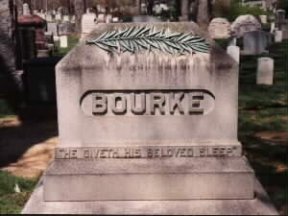 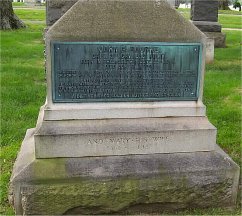
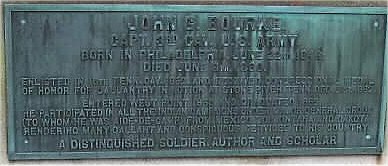
Arlington
Cemetery
|
|
Edgar Rice Burroughs Comments On The War Chief
Danton Burroughs found the following note with the manuscript for
The
War Chief:
"I have gone over the 'copy' carefully and have indicated a number of
phrases, sentences and paragraphs deleted by them, which I wish to have
retained.
The preparation of the manuscript required considerable research work
and as it is necessary for the reader to be able to understand the viewpoint
of the Indian, if he is to be in sympathy with the principal character,
it is essential that much of the matter deleted should remain even though
it draws comparisons that may be odious to some people of our own race
and sometimes shocking to people whose religious convictions are particularly
strong.
I should also call your attention to an Indian name and an Indian word
concerning which the magazine editor and I seem not to agree.
The name is that of a famous Apache Chief, Mangas Colorado, variously
spelled Mangus and Magnus. From a very old book I obtained the suggestion
of the derivation of this name, which in Spanish means colored sleeves.
The author supposed that the name may have been given to him by the Mexicans,
either because of the garment he wore with colored sleeves or from the
fact that his sleeves or arms were stained with the blood of his victims.
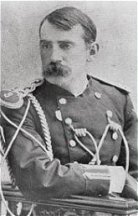
The other word to which I refer is Izzo-Kolth, which the magazine editor
insisted on changing to Izze-Colth. My authority for this spelling is an
article by John G. Bourke, THE MEDICINE MAN OF THE APACHES, which
appeared in the annual report of the Bureau of Ethnology for 1887 and 1888.
The magazine editor deleted what evidently appeared to him tiresome
descriptions of Indian customs, such as burial ceremonies and the decoration
of the bodies of medicine men, but as there is not a great of this and
I believe that it is all based on good authority, it should be permitted
to remain." |

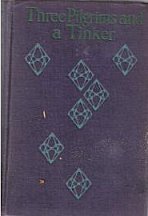
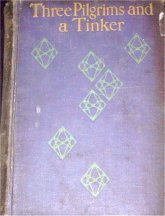
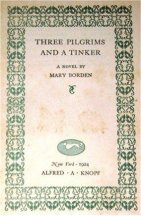
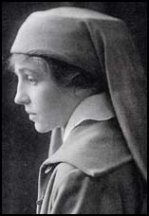
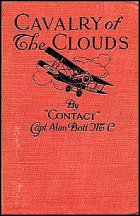
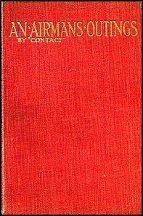
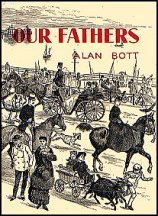
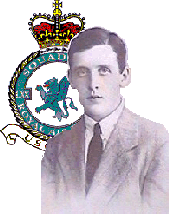
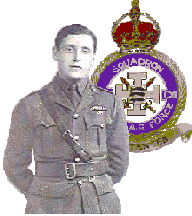
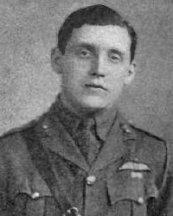















 John Bourke
writes of General George Crook, a legendary Indian fighter in post-Civil
War Arizona, Wyoming, and Montanna. Bourke, who for most of the time was
Crook's aide-de-camp, is an unabashed admirer of the General, but the book
goes far beyond flattery and sycophancy. Bourke makes the reader admire
Crook as much as he himself does, for Crook truly did possess unmatched
stamina, experience, attention to detail and equal measures of sympathy
for the Indians he was fighting and ruthlessness in his ambition to drive
them onto the reservations. Bourke too admires the Indians, especially
the Apaches. In fact, one of the book's high points is its almost anthropological
descriptions of Apache life, the Arizona landscape, life in the frontier
Army, and the social milieu of old Tuscon. The descriptions of Crook's
campaigns against the Sioux and Cheyenne flag just a little, but only in
comparison to Bourke's own rapturous discussions of life in the Southwest.
The book that this compares best to is Eugene Ware's "The Indian War of
1864" (which I've also reviewed for Amazon). Ware, like Bourke, was a serving
Army officer with a keen, sympathetic eye for all he saw in the old West.
Both were involved in more hair-raising episodes than a dozen Hollywood
action heroes combined. I too am a serving Army officer, and I can testify
that none of my peers today has seen as much or writes so well.
John Bourke
writes of General George Crook, a legendary Indian fighter in post-Civil
War Arizona, Wyoming, and Montanna. Bourke, who for most of the time was
Crook's aide-de-camp, is an unabashed admirer of the General, but the book
goes far beyond flattery and sycophancy. Bourke makes the reader admire
Crook as much as he himself does, for Crook truly did possess unmatched
stamina, experience, attention to detail and equal measures of sympathy
for the Indians he was fighting and ruthlessness in his ambition to drive
them onto the reservations. Bourke too admires the Indians, especially
the Apaches. In fact, one of the book's high points is its almost anthropological
descriptions of Apache life, the Arizona landscape, life in the frontier
Army, and the social milieu of old Tuscon. The descriptions of Crook's
campaigns against the Sioux and Cheyenne flag just a little, but only in
comparison to Bourke's own rapturous discussions of life in the Southwest.
The book that this compares best to is Eugene Ware's "The Indian War of
1864" (which I've also reviewed for Amazon). Ware, like Bourke, was a serving
Army officer with a keen, sympathetic eye for all he saw in the old West.
Both were involved in more hair-raising episodes than a dozen Hollywood
action heroes combined. I too am a serving Army officer, and I can testify
that none of my peers today has seen as much or writes so well.
 The Snake
Dance of the Moquis of Arizona: Being a Narrative of a Journey from Santa
Fe, New Mexico, to the Villages of the Moqui Indians of Arizona ~
reprinted by Kessinger Publishing (August 2003)
The Snake
Dance of the Moquis of Arizona: Being a Narrative of a Journey from Santa
Fe, New Mexico, to the Villages of the Moqui Indians of Arizona ~
reprinted by Kessinger Publishing (August 2003)




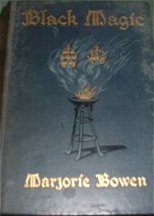
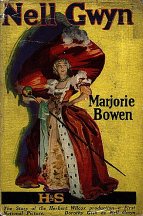
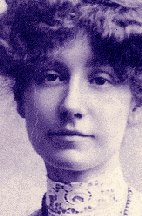
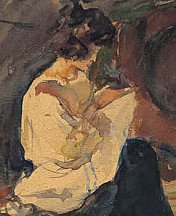
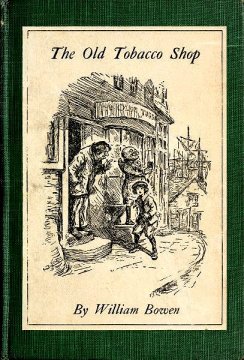
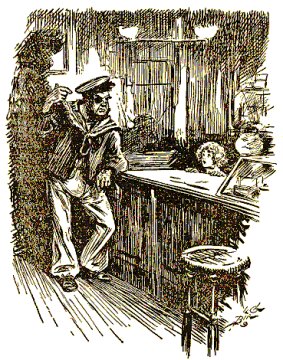
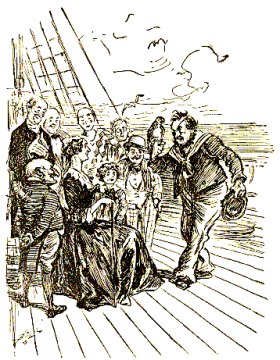
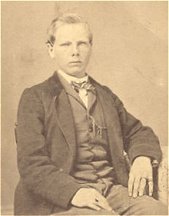
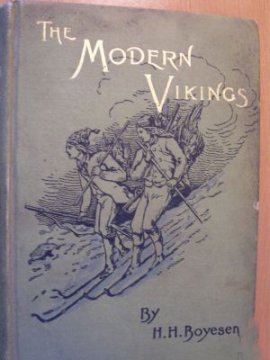
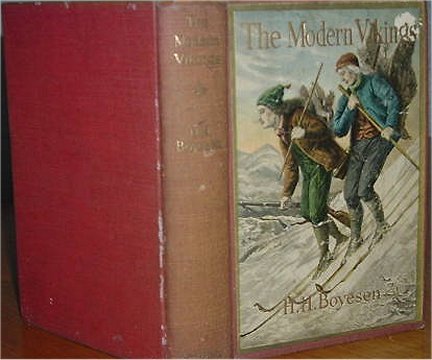
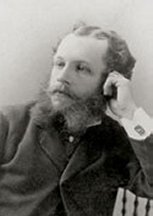 The
career of Hjalmar Hjorth Boyesen, “the first writer of Norwegian
birth or blood to use the English language in the successful cultivation
of literary art” has been subject to general misunderstanding for a number
of reasons. The most important misconception involves Boyesen’s writings
about Norwegian immigration to the United States. Many of his stories fall
into this category, and since Boyesen him self was a Norwegian immigrant,
critics have assumed that he was well qualified to write on the subject.
But Boyesen was not a part of the main stream of Norwegian immigration
to the western states, and a study of his literary output will show that
his serious interests were in other fields. Boyesen was twenty-one when
he came to the United States as a graduate of the Royal Fredrik University
in Christiania. When he died at forty-seven he had published twenty-four
books, all in English; his uncollected magazine material would fill another
twenty-four volumes. For more than twenty years he was a professor of Germanic
literature at Cornell and Columbia universities. His popular reputation,
a very considerable one from 1875 to 1895, has long since ceased to exist,
but Boyesen has not been entirely for gotten. Histories of American literature
give him scant mention and reveal a surprising ignorance of his work and
its significance. He generally fares better at the hands of historians
of intellectual and cultural movements, who still re member his courageous
fight for realistic fiction dealing with important aspects of American
life, and his strictures against the “Iron Madonna,” the young girl magazine
reader whose taste for romantic claptrap prevented American novelists from
writing about serious matters, or from selling their fiction if they did.
One further aspect of Boyesen’s career has been generally overlooked: he
was an important liaison man between European and American literature.
.. .more
The
career of Hjalmar Hjorth Boyesen, “the first writer of Norwegian
birth or blood to use the English language in the successful cultivation
of literary art” has been subject to general misunderstanding for a number
of reasons. The most important misconception involves Boyesen’s writings
about Norwegian immigration to the United States. Many of his stories fall
into this category, and since Boyesen him self was a Norwegian immigrant,
critics have assumed that he was well qualified to write on the subject.
But Boyesen was not a part of the main stream of Norwegian immigration
to the western states, and a study of his literary output will show that
his serious interests were in other fields. Boyesen was twenty-one when
he came to the United States as a graduate of the Royal Fredrik University
in Christiania. When he died at forty-seven he had published twenty-four
books, all in English; his uncollected magazine material would fill another
twenty-four volumes. For more than twenty years he was a professor of Germanic
literature at Cornell and Columbia universities. His popular reputation,
a very considerable one from 1875 to 1895, has long since ceased to exist,
but Boyesen has not been entirely for gotten. Histories of American literature
give him scant mention and reveal a surprising ignorance of his work and
its significance. He generally fares better at the hands of historians
of intellectual and cultural movements, who still re member his courageous
fight for realistic fiction dealing with important aspects of American
life, and his strictures against the “Iron Madonna,” the young girl magazine
reader whose taste for romantic claptrap prevented American novelists from
writing about serious matters, or from selling their fiction if they did.
One further aspect of Boyesen’s career has been generally overlooked: he
was an important liaison man between European and American literature.
.. .more
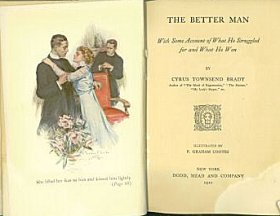
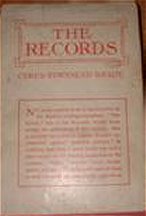
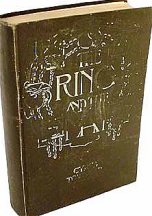
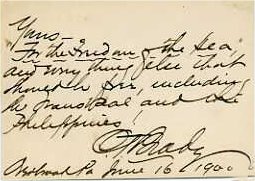
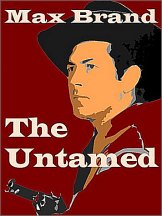
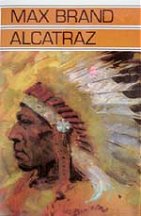
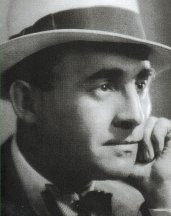 Max Brand,
the most famous pseudonym of Frederick Faust, made his fictional Wild West
an arena for the characters of myth and legend to live and battle again.
While Owen Wister (in The Virginian) and Zane Grey (in Riders
of the Purple Sage and many other novels) made the West an epic landscape
for romantic heroes to ride across and populate, Brand released the mythic
urge that dwells within the finest storytellers and placed demigods on
a timeless western landscape of no particular place that he used again
and again. It began with his first western novel, The Untamed, which first
appeared as a six-part serial in All-Story magazine, starting in its issue
dated Dec. 7, 1918. The story's popularity ensured its publication in book
form, and Tom Mix starred in the silent movie based upon the novel. Faust
wrote hundreds of novels and stories set in this mythic western wonderland.
Westerns weren't all that he wrote. He published mysteries, historical
sagas, and basically invented the medical story when he created Dr. Kildare.
His prodigious production of popular fiction marked him as larger than
life, not so different from the characters he created on paper. Like many
of his larger-than-life characters, Faust was a man of contradictions.
Greatly popular under many pen names for his fiction, Faust's greatest
desire was to gain renown under his actual name for his classically styled
poetry -- yet this work never found an audience. Prevented from serving
in the Army and going to battle because of his damaged heart, Faust poured
his energies and desires for a life of adventure into the protagonists
that peopled his stories.Each year, new books appear in print based on
Faust's pulp writings. His imagination continues to grip new readers generation
after generation.
Max Brand,
the most famous pseudonym of Frederick Faust, made his fictional Wild West
an arena for the characters of myth and legend to live and battle again.
While Owen Wister (in The Virginian) and Zane Grey (in Riders
of the Purple Sage and many other novels) made the West an epic landscape
for romantic heroes to ride across and populate, Brand released the mythic
urge that dwells within the finest storytellers and placed demigods on
a timeless western landscape of no particular place that he used again
and again. It began with his first western novel, The Untamed, which first
appeared as a six-part serial in All-Story magazine, starting in its issue
dated Dec. 7, 1918. The story's popularity ensured its publication in book
form, and Tom Mix starred in the silent movie based upon the novel. Faust
wrote hundreds of novels and stories set in this mythic western wonderland.
Westerns weren't all that he wrote. He published mysteries, historical
sagas, and basically invented the medical story when he created Dr. Kildare.
His prodigious production of popular fiction marked him as larger than
life, not so different from the characters he created on paper. Like many
of his larger-than-life characters, Faust was a man of contradictions.
Greatly popular under many pen names for his fiction, Faust's greatest
desire was to gain renown under his actual name for his classically styled
poetry -- yet this work never found an audience. Prevented from serving
in the Army and going to battle because of his damaged heart, Faust poured
his energies and desires for a life of adventure into the protagonists
that peopled his stories.Each year, new books appear in print based on
Faust's pulp writings. His imagination continues to grip new readers generation
after generation.
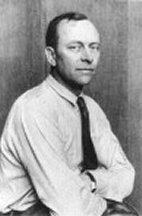 Frederick
Schiller Faust (May 29, 1892 – May 12, 1944) was an American author
known primarily for his thoughtful and literary Westerns. Faust wrote mostly
under pen names, but today is primarily known by only one, Max Brand. Others
include George Owen Baxter, George Evans, David Manning, John Frederick,
Peter Morland, George Challis, and Frederick Frost.
Frederick
Schiller Faust (May 29, 1892 – May 12, 1944) was an American author
known primarily for his thoughtful and literary Westerns. Faust wrote mostly
under pen names, but today is primarily known by only one, Max Brand. Others
include George Owen Baxter, George Evans, David Manning, John Frederick,
Peter Morland, George Challis, and Frederick Frost.
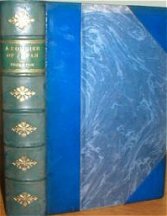
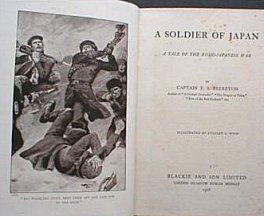
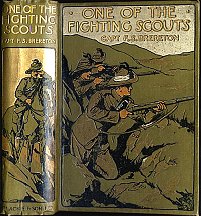
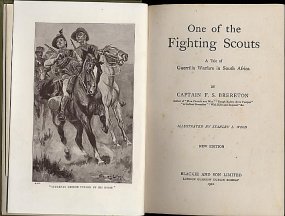
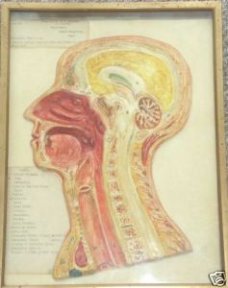
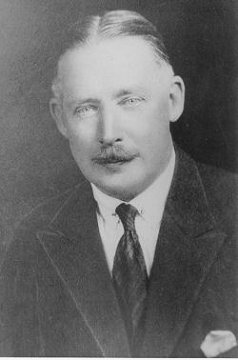 Frederick
Sadlier Brereton (1852-1957) studied medicine at Guys hospital before
gaining first place in the entrance exam to join the Army Medical Staff
in 1896. He was promoted to Captain in 1899 and served with the Royal Army
Medical Corps (RAMC) as a medical officer to the 2nd Scots Guards during
the Boer War. At the outbreak of the First World War, he served with the
RAMC attaining the rank of Lietenant Colonel. A highly decorated individual
he was awarded the CBE IN 1919. Brereton was also a famous adventure book
author prior to the First World War.
Frederick
Sadlier Brereton (1852-1957) studied medicine at Guys hospital before
gaining first place in the entrance exam to join the Army Medical Staff
in 1896. He was promoted to Captain in 1899 and served with the Royal Army
Medical Corps (RAMC) as a medical officer to the 2nd Scots Guards during
the Boer War. At the outbreak of the First World War, he served with the
RAMC attaining the rank of Lietenant Colonel. A highly decorated individual
he was awarded the CBE IN 1919. Brereton was also a famous adventure book
author prior to the First World War.
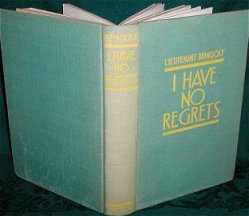
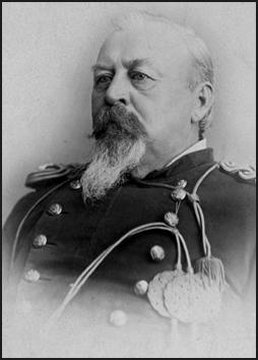 James
Sanks Brisbin (May 23, 1837 – January 14, 1892) was an American educator,
lawyer, and soldier. He served as a Union Army general during the American
Civil War. After the conflict he remained in the military for the rest
of his life, and authored several works on a variety of subjects.
James
Sanks Brisbin (May 23, 1837 – January 14, 1892) was an American educator,
lawyer, and soldier. He served as a Union Army general during the American
Civil War. After the conflict he remained in the military for the rest
of his life, and authored several works on a variety of subjects.
